#biofloc fish farming
Explore tagged Tumblr posts
Text
Top 10 Most Profitable Fish Farming Business Ideas
Ever thought about starting a fish farming business? 🐠💡 Here are Top 10 Profitable Fish Farming Business Ideas that could be your ticket to financial freedom! 🏞️💸 Don't miss out—follow us for more insights and tips! 🚀 #FishFarmingBusiness #SideHustle
Are you looking to dive into a profitable venture that promises lucrative returns? Fish farming, also known as aquaculture, has emerged as one of the most promising and sustainable business opportunities in recent years. With the increasing demand for fish as a protein source and the growing awareness of sustainable farming practices, now is the perfect time to explore the various avenues within…
#aquaculture#aquaculture basics#aquaculture business#biofloc fish farming#factory fish farming#fish farming#fish farming at home#fish farming business#fish farming business ideas#fish farming for beginners#fish farming profit#how good biofloc fish farming#how to start fish farming#indoor fish farm#indoor fish farm business#innovative fish farming#new business ideas#profitable fish farming#recirculating aquaculture systems#sustainable fish farming#top fish farming ideas
0 notes
Text
How Pond Liners Play Vital Role in Semi Biofloc Fish Culture.
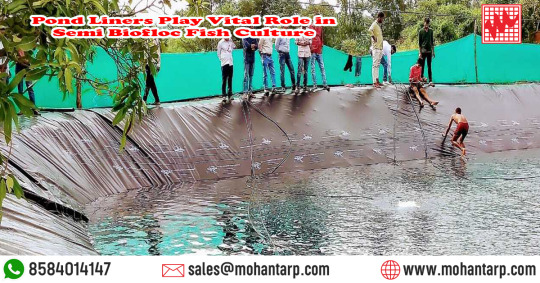
Biofloc Technology (BFT) a hybrid approach that integrates biofloc technology with traditional aquaculture practices. It improved water quality and waste recycling, while maintaining the operational simplicity of traditional pond culture. The important points to remember are as follows:
Water Management:
Pond liners prevent water and nutrients from seeping into the soil. By isolating the water body from the surrounding soil, liners help in creating a more stable environment for the fish to grow better and healthier.
2. Efficiency in Waste Recycling:
Regular water exchange is often necessary to manage waste and water quality for the hygiene of the pond.
3. Disease Control:
Separation of soil and water helps in maintaining a healthier and more controlled environment for the fish.
4. Infrastructure and Operational Efficiency:
High-quality pond liners are resistant to physical damage, UV radiation, and chemical degradation, ensuring long-term reliability for the culturist and save the time and money for the farmers.
5. Environmental Impact:
Pond liner helps the region which face water deficiency. In semi biofloc fish culture, pond liner significantly improves the functional efficiency, sustainability of the environment to improve fish health and productivity.
6. Temperature Regulation:
Liners can play a vital role in temperature regulation. It can help maintain a more stable water temperature, conducive to the growth of fish and beneficial microbes.
7. Improved Harvesting:
The liner creates a uniform surface that can be quickly drained and cleaned, reducing stress on the fish during harvest and minimizing losses.
Pond liners plays a crucial role in semi biofloc fish culture systems, providing several benefits that increase the sustainability and productivity of the operation.
How Mohan Merchandise Involved with…
For the last few years, we provide semi biofloc pond liner and biofloc fish tanks in all over India. We provide Industry best and quality material to fulfil the expectation of the farmers to grow the fish culture in India.
As per PMSY (Pradhan Mantri Matsya Sampada Yojana) we have supplied more than 200 + semi biofloc pond liners and 10000 + biofloc fish tank installed and running successfully all over India.
We have our own manufacturing unit at Howrah, West Bengal, India to provide best quality tarpaulin biofloc fish tank and semi biofloc liner. We also provide accessories related to biofloc liner and tanks. We have our own highly qualified and technically sound installation team.
More for details read our latest blogs-
https://www.mohantarp.com/biofloc-technology-an-overview/
https://www.mohantarp.com/pond-liner-for-water-harvesting/
0 notes
Text
Bioflok maintains healthy water quality for Biofloc Fish Farming. Our Biofloc Technology Microbial Formulation degrades organic sludge and lowers ammonia.
Bioflok maintains healthy water quality for Biofloc Fish Farming. Our Biofloc Technology Microbial Formulation degrades organic sludge and lowers ammonia.
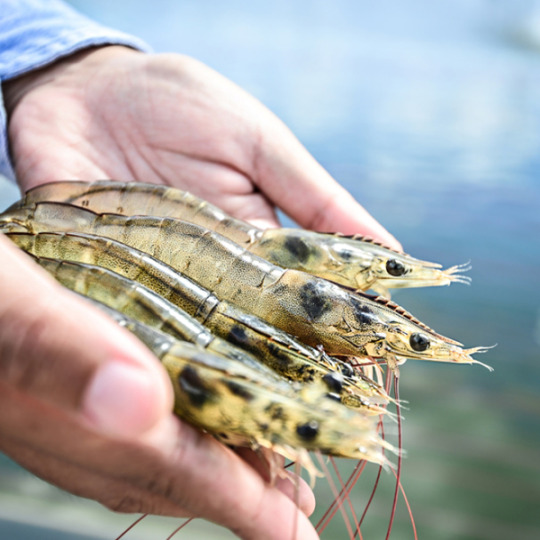
0 notes
Text

"Take your industrial operations to new heights with our powerful ring blowers! 💨"
🌐 www.yashblower.com ☎️ +91 9971006400
#yashblowers#IndustrialTech#EfficiencyBoost#ringblowers#airflow#AirBlower#industrialairblower#pressure#manufacturer#industrialapplication#turbineblower#vacuum#ventilation#biofloc#stp#areation#blowers#ringblower#fish farming#aquaculture#durable#efficiency
1 note
·
View note
Text
Fish Farming: बायोफ्लॉक मछली पालन में कितनी होती है कमाई, जानें छह महीने में कितना होगा मुनाफा

How Much Money Can Be Made in Six Months from Biofloc Fish Farming? One of India's most profitable agricultural ventures is fast emerging: fish farming. Because of its great productivity and affordability, Biofloc technology has become extremely popular among fish farming techniques. In addition to guaranteeing sustainable agricultural methods, this approach offers high earnings in a short amount of time—usually six months. However, what is the real income potential of Biofloc fish farming? Let's dissect it and investigate.
Biofloc Fish Farming: What is it? Fish excrement and other waste materials are transformed into protein-rich feed by microorganisms like bacteria in the novel and environmentally friendly fish farming method known as "Biofloc." This makes the process more efficient and sustainable while lowering reliance on pricey external feed.
Biofloc is ideal for urban and semi-urban environments with limited acreage since, in contrast to traditional fish farming, it can be carried out in small tanks. The fish will grow more quickly and survive longer in the controlled habitat.
Investment Needed for Fish Farming using Biofloc Biofloc's comparatively low investment requirement is one of the factors contributing to its growing popularity. The expenses are broken down as follows:
Cost of Setup:
₹50,000 to ₹70,000 for a 4,000-liter Biofloc tank Systems for aeration: ₹10,000 to ₹20,000 Water test kits cost between ₹2,000 and ₹5,000. Other (fittings, pipes, etc.): ₹5,000 to ₹10,000 Costs of Operations:
Fingerling fish seeds: ₹2,000 to ₹5,000 Feed: ₹15,000 to ₹20,000 (Biofloc technology has greatly decreased this amount). Monthly maintenance and electricity costs range from ₹2,000 to ₹5,000. A small Biofloc setup typically costs between ₹80,000 to ₹1,20,000 to start.
Fish Types That Are Good for Biofloc Farming Not every fish does well in a Biofloc habitat. Among the most widely cultivated species are:
The pangasius tilapia catfish Carp, shrimp, or prawns (sometimes) These species are resilient and do well in the regulated conditions of Biofloc tanks.
Profitability of Fish Farming using Biofloc Let's move on to the most crucial aspect: What is your earning potential?
Growth Cycle: Within four to six months, the majority of fish species raised in Biofloc systems are ready for the market. Tilapia, for instance, reaches 500–800 grams during this time.
Production Volume: 300–500 kg of fish can be produced per cycle in a single 4,000-liter Biofloc tank.
Market Price: In the market, fish like tilapia fetch between ₹100 and ₹150 per kilogram.
Revenue: ₹120 x 500 = ₹60,000 would be the revenue for 500 kg of fish at a price of ₹120 per kilogram.
Profit: One tank makes about ₹40,000 per cycle after operating expenses (about ₹20,000 for six months) are subtracted.
You can greatly increase your profits if you have more than one tank.
Elements That Impact Profitability The following variables affect how profitable Biofloc fish farming is:
Water Quality Management: It's critical to maintain appropriate pH, temperature, and oxygen levels. Fish death can result from poor water quality.
Feed Management: Supplementing feed can increase growth even though Biofloc lowers feed expenses.
Market Demand: The availability and local demand for fish in your area affect prices.
Control of Disease: A disease outbreak can significantly lower revenue. Preventive actions and routine monitoring are crucial.
Benefits of Fish Farming with Biofloc Minimal Feed Cost: Recycling waste lessens the demand for outside feed. High Yield: A smaller area may support more fish. Eco-Friendly: Reduces pollution in the environment by turning garbage into biomass that may be used. Scalable: Fits both large commercial setups and small-scale farmers. Obstacles in Biofloc Agriculture Despite its enormous profitability, Biofloc has a unique set of difficulties.
Technical expertise is needed for the initial setup. Water parameter monitoring is time-consuming. Not appropriate for all species of fish. Fish health may be impacted by aeration disruptions caused by power outages. In conclusion For small and medium-sized farmers seeking high yields with less land requirements, biofloc fish farming is revolutionary. Even with a modest setup, you can make large earnings during a six-month growth cycle. However, effective management, technological expertise, and market research are necessary for success. Biofloc fish farming can be a very profitable endeavor if you're prepared to put in the time and work.
FAQs How big should a Biofloc tank be? Beginners should start with a 4,000-liter tank because it can produce up to 500 kg of fish per cycle.
What kinds of fish are ideal for Biofloc farming? In Biofloc systems, tilapia, catfish, and pangasius are some of the most frequently cultivated species.
How much money is needed to raise fish using Biofloc? A small Biofloc system will cost between ₹80,000 and ₹1,20,000 initially.
Is it profitable to raise fish with Biofloc? In a six-month cycle, farmers can indeed make between ₹30,000 and ₹40,000 per tank, contingent on market conditions and management.
What dangers come with raising fish using Biofloc? Disease outbreaks, power outages that impact aeration, and poor water quality are typical hazards. These dangers can be reduced with routine monitoring and preventative actions.
0 notes
Text
1 note
·
View note
Text
10 Best Online Business Courses For Elevating Your Business Skills
Starting a business is an exciting journey, but you need to know how to do it right. Online business courses are like guides that teach you everything you need to know about starting and running a business. They help you understand things like planning, marketing, money, and how to make your business work. They help you learn the basics of business, like planning, marketing, finance, and operations. These courses are great for people who want to boost their business skills and are especially useful for those who are thinking about starting their own business. By taking these courses, you can feel more confident and knowledgeable about turning your business ideas into a real business.
Here, we will discuss 10 courses that can help you start and grow a profitable business:
1. Dairy Farming Courses
Dairy farming is a great business in agriculture Dairy farming courses teach you everything you need to know about taking care of cows and making milk. They cover how to care for cows, plan their food, and produce milk. The course includes important topics like choosing the right kind of cows, keeping them healthy, and creating a good business plan for your dairy farm. If you want to start a dairy farm, this course is very helpful. It helps you learn how to do things the best way and make more money. By studying the market and taking good care of your cows, you can make sure you have a steady income and grow your dairy business.
2. Image Consultant Course
An image consultant makes sure that people and businesses look good and make a good impression on others. This image consultant course is really helpful if you want to work in areas like branding, fashion, or personal growth. It shows you how to understand different styles, give advice on how people should dress, and help create a positive image. If you’re starting your own business, this course gives you important skills to make your personal brand shine and present your business well to others. Learning about image consulting can help you find more customers and make good connection in the business world
3. Soap Processing Business Course
Making soap is a good business idea because people always need soap and it can be profitable for you. This course teaches you how to make soap in different ways using different things. You’ll learn how to pick the best stuff to use, set up a place to make soap, and how to sell your soap. If you’re thinking about starting a soap business, this course is perfect for you. It gives you helpful advice on making top-quality soap. Since lots of people like natural and organic products, a soap business can do really well. This course provides all the information you need to begin your soap-making adventure the right way.
4. Biofloc Fish Farming Course
Biofloc fish farming is a smart way to grow fish in small spaces without spending a lot of money. This course will show you how biofloc technology works, why it’s a good choice, and the steps to start your own fish farm. It covers important topics like keeping the water clean, feeding the fish properly, and maintaining the system. For people who want to start a fish farming business, this course gives you the information needed to succeed in the growing fish farming industry. Biofloc fish farming course is a good choice for anyone looking to start a business in agriculture or fish farming because it requires less money to begin and can give you better results.
5. Hydroponics Business Course
Hydroponics is a new way of farming where plants grow without using soil. Instead, you use water and nutrients to help plants grow. This Hydroponics course is perfect for anyone who wants to start a green and eco-friendly farming business. It will show you how to use special hydroponic systems, take care of water and food the right way, and grow different kinds of plants. You’ll learn how to set up everything you need and how to take care of your plants. The main benefits of this course are that you can grow plants in small spaces and have full control over their environment for the best results. Hydroponics is getting more popular because it is efficient and good for the environment, so taking this course can give you a great business opportunity.
6. Goat Farming Business Course
Goat farming is a great business option for anyone who wants to start working with animals. This course gives you all the details you need about how to farm goats. You’ll learn about choosing the right goat breeds, feeding them properly, and keeping them healthy. The course also helps you make a plan to start and run your goat farming business well. It’s a good choice for people who want to begin a small farm with not too much money to start. Goat farming is becoming more popular because people want goat meat and milk. By taking goat farming course, you’ll get the skills to run a successful goat farming business.
7. Dry Cleaning Business Course
Dry cleaning is like a service that people will always need, and starting a dry cleaning business can be a good way to make money. This course teaches you everything you need to know to start and run your own dry cleaning business. You will learn how to choose the right equipment, understand what your customers want, and manage your workers. The course also covers setting prices for your services and promoting your business. If you want to start your own dry cleaning business, this course provides helpful tips and plans to help you succeed in a busy market. With good planning and management, a dry cleaning business can give you a steady income.
8. Cattle Feed Processing Business Course
Cattle feed processing is a key part of the livestock business. This course shows you how to start and run a cattle feed processing company. It includes lessons on getting the right materials, how to process the feed, and how to market it to farmers who need it. If you’re thinking about starting a business in farming, this course is very useful. It helps you understand the rising need for good cattle feed. With the right knowledge and management, running a cattle feed processing business can be very profitable and lead to long-term success and growth.
9. Storytelling Course
Storytelling is a crucial skill for any business because it helps you share your brand’s message clearly. This storytelling course shows you how to create engaging stories that catch the attention of your audience, whether you’re using them for marketing, ads, or talking to customers. For people starting a business, being good at storytelling is a great way to connect with new customers and make a memorable impact. This course is good for people who want to get better at talking to others and make their business look good. By learning how to tell stories, you can make your business look even better and find customers who will like your business and stay with you.
10. Perfume Making Business Course
Making perfumes can be a fun and exciting business. This course teaches you how to make perfumes, from choosing the right smells to mixing them together and putting them into bottles. You will also learn how to start your own perfume business and how to sell your products well. For anyone who wants to start a perfume business, this course gives you the important information you need about getting ingredients and making special perfume. With more people wanting unique and personal scents, starting a perfume business can be a fantastic chance, and this course gives you the skills to begin.
How IID Helps You Learn These Courses
Through IID (Institute for Industrial Development), you can learn all these courses and gain the skills needed to start your own business. IID offers structured, easy-to-understand modules, practical insights, and expert guidance to help you succeed. Whether you’re interested in agriculture, manufacturing, or services, IID provides the right tools and resources to turn your passion into a profitable business. By completing these courses through IID, you can take the first step toward building a successful business and elevating your entrepreneurial journey.
Conclusion
Online business courses give you the knowledge and skills you need to succeed in today’s tough business world. If you want to start a dairy farm, make soap, or create perfumes, these courses will provide useful tips and practical methods to help you reach your goals. By learning through IID, you get not only expert knowledge in your field but also the help you need to make your business ideas come true. With good training and determination, you can build a successful business and do well in the growing market.
#onlinelearning#businesscourses#onlinecourses#iidcourses#imageconsultingcourse#storytellingcourse#dairyfarmingcourse#perfumemakingcourse#cattlefeedcourse#goatfarmingcourse#fishfarmingcourse#drycleanbusinesscourse
0 notes
Text
BIOFLOC AQUA CULTURE TECHNOLOGY IN GHANA
After leaving his banking job, Sailesh Chudasama, a Kenyan national, started Tarps and Shades Ltd. This company is changing how tarpaulin products are used in Africa, from fish tanks to farm setups.Sailesh Chudasama is bringing new technology to aquaculture in Africa, training and advising on this innovative approach, and leading a revolution in blue aquaculture. Sailesh has been inspiring and…
0 notes
Text
The Lifesaving Flow: Exploring the Importance of Water Movement in Biofloc Aeration
In the bustling world of fish farming, every ripple counts, and one silent hero often goes unnoticed: water movement. Particularly within the innovative world of biofloc technology, ensuring proper aeration through water movement isn't just important—it's indispensable. Let's embark on a journey to uncover the many benefits of water movement, explore the potential consequences of its absence, and zoom in on the remarkable role of bubbles in biofloc aeration.
The Important Role of Water Movement
Water movement isn't just about creating pretty patterns in a tank; it's about sustaining life within aquatic ecosystems. In biofloc systems, where microscopic communities thrive and fish rely on a delicate balance, water movement is the beating heart that keeps everything in harmony.
1. Oxygenation: Picture this: fish gasping for breath in still water. Without enough oxygen, aquatic life suffocates. Water movement ensures that oxygen-rich water circulates throughout the tank, providing a lifeline for fish, shrimp, and the tiny creatures that call biofloc systems home.
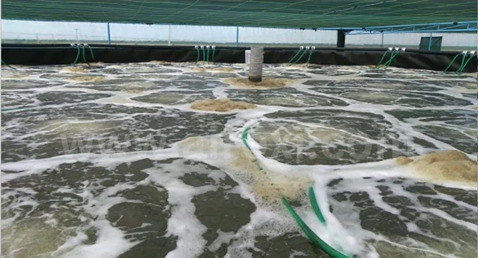
2. Nutrient Distribution: Just like plants need water to transport nutrients from roots to leaves, aquatic organisms depend on water movement to distribute essential nutrients and food particles. Without this movement, some areas of the tank become nutrient-deprived, hindering growth and productivity.
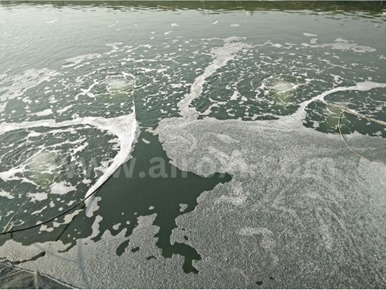
3. Temperature Regulation: Water movement plays a crucial role in maintaining optimal water temperatures. It prevents thermal stratification, where warmer water accumulates at the surface and colder water sinks to the bottom. By promoting uniform temperatures, water movement creates a comfortable environment for aquatic life.
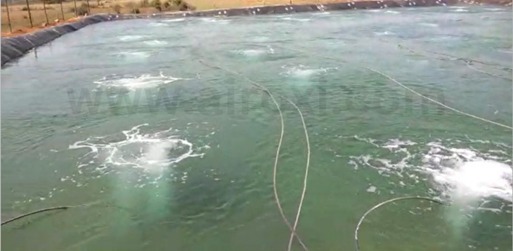
4. Waste Removal: Imagine living in a room without windows or doors—eventually, it would fill up with trash. In biofloc systems, water movement prevents waste from accumulating by carrying it away from the living areas of aquatic organisms. This reduces the risk of water pollution and maintains clean water quality.
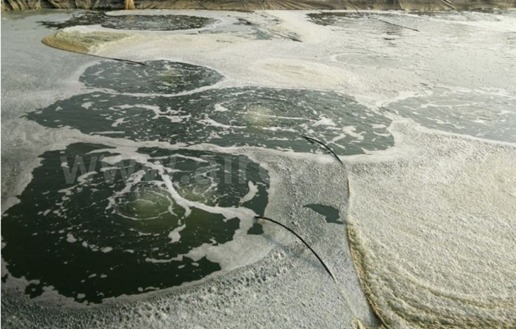
The problems caused by low water movement
Now, let's think about the bleak scenario of stagnant water within fish farming systems. Without the gentle movement of water, life within biofloc tanks would spiral into chaos.
1. Oxygen Deprivation: As oxygen levels drop, fish and other aquatic organisms struggle to breathe. Without enough oxygen, they become stressed, vulnerable to diseases, and ultimately face suffocation—a sad fate for creatures that rely on the very substance dissolved in the water around them.
2. Nutrient Imbalance: In the absence of water movement, nutrients and food particles settle at the bottom of the tank, creating localized hotspots of abundance and barren deserts elsewhere. This imbalance disrupts the delicate ecosystem dynamics, leading to stunted growth, malnutrition, and increased competition among organisms.
3. Temperature Extremes: Still water becomes a breeding ground for temperature extremes. Without the moderating influence of water movement, surface waters may become excessively warm, while deeper waters remain frigid—a recipe for thermal shock and stress among aquatic inhabitants.
4. Toxic Buildup: Waste products, such as ammonia and carbon dioxide, accumulate in still water, poisoning aquatic life. Ammonia, released as a byproduct of organic decay and excretion, reaches toxic levels, impairing fish health and compromising immune systems. Meanwhile, carbon dioxide accumulates, lowering pH levels and further exacerbating the toxic environment.
The Marvel of Bubbles: Aeration in Biofloc Systems
Now, let's zoom in on a fascinating aspect of water movement in biofloc systems: the role of bubbles. Bubbles aren't just whimsical spheres dancing in the water; they're tiny messengers of life-saving oxygen. AirOxi diffusers and aeration tubes are some of the examples of this kind of aeration which also provides water movement. You can find out more information here www.airoxi.com and buy the airoxi tubes here www.buy.airoxi.com
1. Oxygen Infusion: Bubbles act as carriers of oxygen, ferrying precious air from the surface to the depths of the tank. As they rise through the water column, bubbles release oxygen molecules, enriching the surrounding water and sustaining aerobic microbial activity.
2. Mixing Magic: As bubbles ascend, they create a whirlwind of motion, stirring the water and promoting mixing. This turbulent action prevents stratification, ensuring that oxygenated water reaches every corner of the tank and revitalizes the entire ecosystem.
3. Surface Splash: When bubbles burst at the water's surface, they create a splash that enhances gas exchange. This process facilitates the removal of carbon dioxide—a metabolic waste product—and replenishes oxygen levels, rejuvenating the aquatic environment.
4. Aesthetic Appeal: Beyond their functional benefits, bubbles add a touch of whimsy to biofloc systems. Watching bubbles dance through the water can be mesmerizing, fostering a sense of connection with the aquatic world and inspiring awe in observers.
Expanding Horizons: Harnessing the Power of Bubbles
In the journey for optimal water movement and aeration, harnessing the power of bubbles becomes paramount. Here's how we can maximize the effectiveness of bubbles in biofloc systems:
1. Bubble Dynamics: By optimizing bubble size, distribution, and release rate, fish farmers can fine-tune aeration levels to meet the specific needs of their biofloc systems. Smaller bubbles offer greater surface area for oxygen transfer, while controlled release ensures efficient oxygenation without causing turbulence-induced stress to aquatic organisms. Ensure that the AirOxi tube that you select for aeration is of proper size and is as per the blower that you have decided. To see which blower is suitable for your aquaculture you can read our previous blog here www.airoxi.com (which blower is suitable)
2. Aeration Devices: Investing in high-quality aeration devices, such as fine-pore diffusers or air stones, enhances bubble performance and longevity. These devices create a fine mist of bubbles that linger in the water, gradually releasing oxygen and promoting sustained aeration.
3. Strategic Placement: Positioning aeration devices strategically throughout the tank ensures uniform oxygen distribution and prevents dead zones where water movement is limited. By targeting areas prone to stagnation, such as corners or beneath dense biofloc mats, fish farmers can mitigate the risk of oxygen depletion and promote optimal conditions for microbial growth and nutrient recycling.
4. Monitoring and Adjustment: Regular monitoring of water quality parameters, including dissolved oxygen levels, allows fish farmers to assess the effectiveness of aeration strategies and make timely adjustments as needed. By maintaining a delicate balance between aeration and water movement, they can optimize the health and productivity of their biofloc systems.
Conclusion: Riding the Wave of Biofloc
In the ever-changing world of fish farming, the importance of water movement in biofloc aeration shines brightly as a beacon of innovation and sustainability. From the life-sustaining benefits of oxygenation and nutrient distribution to the mesmerizing dance of bubbles, water movement holds the key to unlocking the full potential of biofloc systems. By embracing the marvels of modern technology and harnessing the power of nature, fish farmers can ride the wave of innovation toward a future where thriving aquatic ecosystems coexist harmoniously with sustainable fish farming practices.
As we navigate the challenges and opportunities of aquaculture, let's remember the crucial role of water movement—a lifeline for aquatic life and a cornerstone of sustainable fish farming. By understanding and harnessing its power, we can pave the way for a brighter, more resilient future for our oceans and the communities that depend on them. Together, let's continue to explore, innovate, and protect the precious resources that sustain life beneath the waves.
Contact AirOxi for your aquaculture aeration requirements
+917041004098
www.buy.airoxi.com
0 notes
Text
Aquatic Solutions: Addressing Global Challenges with Marine Biotechnology
Introduction to Marine Biotechnology Marine biotechnology utilizes living marine organisms and their derivatives for industrial, medical, environmental and other sustainable applications. It focuses on exploring the immense biodiversity and biological resources found in the marine environment. The oceans cover over 70% of the Earth's surface and contain a vast variety of lifeforms that have evolved unique biological properties and molecules. Marine biotechnology aims to unlock this untapped potential through research and innovations.
Marine Bioprospecting Marine bioprospecting involves searching oceans, coastal waters and marine life for bioactive compounds, genes and other materials that can be exploited commercially. Some key activities include monitoring biodiversity hotspots, collecting and screening biological samples for useful properties, isolating lead compounds and developing applications. Marine organisms like sponges, corals, microbes and algae have yielded molecules with diverse pharmaceutical applications. Compounds used in cancer treatments, anti-inflammatories and antimicrobials have been derived from marine sources through bioprospecting. Advances in genomics and metabolomics also aid the drug discovery process from marine natural products.
Biomedical Applications Marine-derived pharmaceuticals represent a promising area within marine biotechnology. Several drugs developed from marine sources are already in clinical use or under clinical trials. compounds obtained from marine sponges have led to antiviral and anticancer drugs. Ziconotide, an analgesic developed from a cone snail peptide, is used for severe chronic pain. Ecteinascidin 743, an anticancer compound from a marine tunicate is marketed for treating soft tissue sarcomas and other cancers. Fucoidan from brown algae shows anti-inflammatory and anticoagulant properties. Research continues to explore more marine organisms for bioactives against diseases like arthritis and Alzheimer’s. Marine enzymes also offer opportunities in areas like tissue engineering and wound healing.
Aquaculture and Mariculture Marine biotechnology helps improve aquaculture practices and marine farming techniques. Genetic improvements through selective breeding and biotechnology tools augment disease resistance in cultured species. Microalgae and feed supplements utilizing marine microbes aid larval and post-larval development. Bioflocs containing waste-digesting bacteria provide eco-friendly water treatment in recirculating aquaculture systems. Bioremediation using micro/macro algae assists effluent treatment from aquafarms. Marine bacterial extracts serve as immunostimulants and natural healthcare alternatives in shrimp and fish mariculture. Advances accelerate sustainable production and higher yield in mariculture to meet the global seafood demand.
Environmental Applications Biotechnological methods help address various environmental issues affecting the oceans. Bioremediation leverages metabolically versatile marine microbes like algae, fungi and bacteria to detoxify pollutants and rehabilitate contaminated coastal and offshore sites. Phytoremediation utilizes salt-tolerant plants to remove heavy metals and nutrient runoff from seawater. Genetic engineering modifies oil-degrading bacteria to ensure faster oil spill cleanup. Biosensors incorporating marine enzymes and whole-cell detection systems enable real-time coastal pollution monitoring. Bioluminescent bacteria offer scope in marine biomonitoring as indicators of toxicity and contamination levels. Such green technologies aid responsible utilization of marine resources and their conservation.
Energy from Oceans Marine biomass represents a renewable source of bioenergy. Micro/macroalgae can be converted to liquid biofuel through transesterification and fermentation. Seaweed cultivation coupled with pyrolysis or gasification produces biogas, while anaerobic digestion generates methane from marine biomass. Biotechnological research optimizes algal strains, development of efficient conversion processes and validation of techno-economic models to tap the ocean's energy potential viably. Microbial fuel cells leveraging exoelectrogenic marine bacteria directly convert biochemical energy to electricity. Osmotic power utilizes blue energy from salinity differences between seawater and rivers. Wave and tidal energies extracted through emerging marine hydrokinetic technologies add to the blue energy basket.
Challenges and Future Prospects While offering immense promise, marine biotechnology market still faces challenges in areas like cost-effective production, stability of marine compounds, regulatory approvals and public acceptance of ocean-based GM technologies. Adverse impacts of climate change on marine ecosystems and dwindling natural resources also demand mitigation. Integrated efforts towards exploration of deep-sea resources, metagenomic studies on uncultured microbes, synthesis of unique marine biomolecules and developing marine-derived industrial bioprocesses can significantly advance the sector. Public-private partnerships, internationally coordinated research initiatives and responsible scientific stewardship hold the key to realizing marine biotech’s full potential sustainably in the times ahead.
In conclusion, with over 70% of our planet covered by oceans, marine biotechnology market presents a vital avenue to harness the vast treasure of marine biodiversity alongside alleviating challenges on land and seas. A blending of marine sciences with industrial biotechnology promises to deliver innovative solutions across medicine, aquaculture, bioremediation and renewable energy. Sustained efforts to develop advanced techniques, unlock marine genome secrets and scale up
0 notes
Text
PVC / HDPE Biofloc Tank
Introducing our premium PVC / HDPE Biofloc Tank, the ideal solution for modern aquaculture and fish farming.
Key Features:
Durable Construction:
Optimal Light Penetration:
ISO & ISI Certified:
Waterproof and Weatherproof:
Tear Lock Technology:
Applications Areas:
Aquaculture Use
Fish Farming
Research and Education
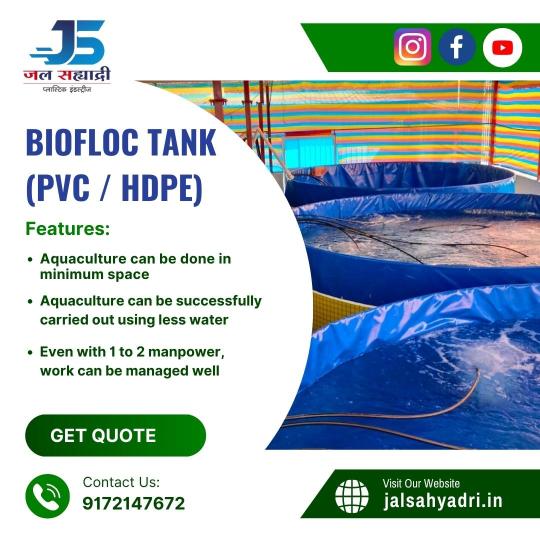
0 notes
Text
How Pond Liners Play Vital Role in Semi Biofloc Fish Culture
Biofloc Technology (BFT) a hybrid approach that integrates biofloc technology with traditional aquaculture practices. It improved water quality and waste recycling, while maintaining the operational simplicity of traditional pond culture. The important points to remember are as follows: Water Management: Pond liners prevent water and nutrients from seeping into the soil. By isolating the water…
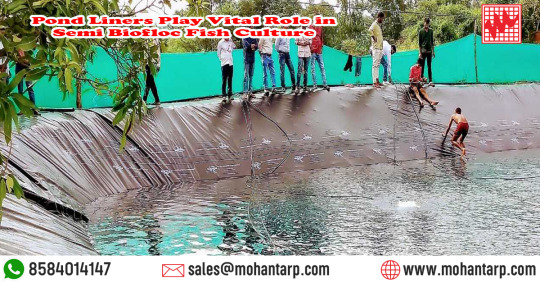
View On WordPress
0 notes
Text
Biofloc Fish Farming In Nepal
Introduction
Biofloc fish farming is gaining popularity in Nepal as an effective and long-lasting technique for growing fish. This innovative technique involves creating an environment where microorganisms, such as bacteria and algae, form a bio floc to enhance water quality and provide a nutrient-rich environment for fish. In Nepal, where traditional aquaculture faces water scarcity and environmental concerns, bio floc fish farming offers a promising solution.
Biofloc fish farming is a kind of aquaculture that uses microbial communities to turn fish waste into a naturally occurring food source, enabling high-density, sustainable fish farming.
With its diverse topography and varying climate, Nepal presents opportunities and challenges for aquaculture. Implementing bio floc technology allows fish farmers to overcome some of these challenges. One of the critical advantages of bio floc fish farming in Nepal is its water-saving feature.
Traditional aquaculture often requires large amounts of water, which can be a limitation in regions with water scarcity. Biofloc systems significantly reduce water consumption, making it a sustainable option for farmers in Nepal.
Moreover, biofloc fish farming contributes to increased biosecurity. The closed and controlled environment minimizes the risk of diseases, providing a healthier and more secure environment for fish growth. This is particularly important in Nepal, where disease outbreaks can devastate aquaculture.
Also, Read: Depths of Sustainable Fish Farming Investigated
Is Biofloc Fish Farming Profitable?
Biofloc fish farming can be very profitable, but it’s not a guaranteed path to riches. Several factors influence its potential for success.
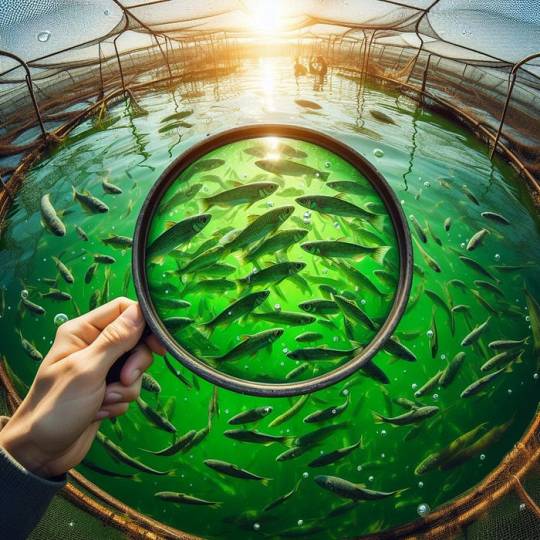
The microbial flocs in biofloc systems provide a natural and cost-effective feed source for the fish.
The market demand for fish is another crucial factor. In Nepal, where fish is a staple food and demand is consistently high, biofloc fish farming can be lucrative. The controlled environment of biofloc systems ensures a steady supply of quality fish, meeting consumer preferences and fetching more money on the open market.
However, like any business venture, biofloc fish farming success requires careful planning, proper management, and adherence to best practices. Farmers need to invest in training and education to maximize the benefits of biofloc technology and ensure a profitable outcome.
Biofloc Fish Farming Guide
Implementing a successful biofloc fish farming system demands a thorough comprehension of the technology and its principles. Here is a step-by-step guide to help farmers in Nepal establish and manage a biofloc fish farm:
Step 1: Selection of Site: Select a place that has access to water and adequate facilities. Think about things like availability, temperature, and water quality.
Step 2: System Setup: Install a bio-floc system, including tanks or ponds, aeration systems, and a water recirculation system. Ensure proper design and sizing based on the planned fish production.
Step 3: Microbial Inoculation: Introduce beneficial microorganisms like bacteria and algae to initiate bio floc formation. This microbial community will help maintain water quality and provide a nutrient-rich environment for fish.
Step 4: Stocking the Fish: Select appropriate fish species based on market demand and local preferences. Stock the fish in the biofloc system at recommended densities.
Step 5: Water Quality Management: Monitor and manage water parameters such as pH, dissolved oxygen, ammonia, and nitrite levels. Adjust water quality as needed to ensure optimal conditions for fish growth.
Step 6: Feed Management: Implement a feeding strategy based on the nutritional requirements of the selected fish species. Use high-quality, balanced feed and adjust feeding rates based on fish growth.
Step 7: Disease Prevention: Adopt biosecurity measures to prevent disease outbreaks. Implement quarantine protocols for new fish introductions and monitor health regularly.
Step 8: Harvesting: Plan the harvesting process based on the growth rates of the fish. Use proper harvesting techniques to minimize stress and ensure product quality.
Step 9: Marketing: Develop a marketing strategy to sell the harvested fish. Establish partnerships with local markets, restaurants, or distributors to guarantee a consistent item market.
Step 10: Continuous Learning: Stay updated on advancements in biofloc technology and aquaculture best practices. Attend training programs and workshops and engage with the aquaculture community for continuous learning and improvement.
Biofloc Fish Farming Cost
While bio-floc fish farming offers numerous benefits, awareness of the setup and maintenance costs of a bio-floc system is crucial for farmers in Nepal considering this innovative method. The cost of biofloc fish farming can differ based on elements like the size of the operation, system design, and local conditions.
General range of estimated costs for Biofloc fish farming in Nepal:
Small backyard system (around 1000 liters): NPR 20,000 — NPR 50,000
Medium-scale system (around 5000 liters): NPR 50,000 — NPR 1,00,000
Large-scale commercial system (around 10,000 liters or more): NPR 1,00,000 — NPR 5,00,000 or more
Here’s a breakdown of critical expenses:
Infrastructure Costs:
Building bio floc ponds involves expenses such as excavation, pond liners, aeration systems, and other infrastructure components. The size and number of ponds will influence the overall infrastructure cost.
Microbial Inoculation:

Carbon sources, such as molasses, are often added to stimulate microbial growth in biofloc systems.
These additives contribute to developing a healthy microbial community in the pond.
For more details Click Here
0 notes
Text
Reducing Environmental Impact in Aquaculture through Biofloc Technology
As global demand for seafood continues to rise, the aquaculture industry faces the challenge of increasing production while minimizing its environmental impact. Traditional aquaculture systems often involve excessive water usage, pollution from fish waste, and the discharge of harmful effluents into natural ecosystems. Biofloc Technology (BFT), an innovative approach to sustainable fish farming, has emerged as a solution that addresses these environmental challenges by creating a closed-loop system where waste is treated and recycled. This article explores how Biofloc Technology helps reduce the environmental impact of aquaculture and promotes more sustainable practices.

The Environmental Challenges of Conventional Aquaculture
Conventional aquaculture practices, especially those relying on open water systems, have been associated with several environmental issues:
Water Pollution: Fish farms discharge large volumes of untreated wastewater, containing uneaten feed, fish excreta, and other organic waste. This runoff can lead to the eutrophication of nearby water bodies, causing harmful algal blooms, oxygen depletion, and damage to aquatic ecosystems.
Water Resource Depletion: Traditional aquaculture systems require regular water exchanges to maintain water quality, leading to high water consumption. This is particularly problematic in regions facing water scarcity or in areas where freshwater resources are limited.
Feed Waste: Excessive use of commercial feed, much of which remains uneaten and decomposes in the water, adds to the environmental burden by increasing nutrient loads and contributing to water pollution.
Greenhouse Gas Emissions: Conventional fish farming can contribute to greenhouse gas emissions, particularly methane and nitrous oxide, which are released during the decomposition of organic waste in poorly managed systems.
How Biofloc Technology Reduces Environmental Impact
Biofloc Technology offers an alternative to conventional aquaculture by creating a self-sustaining, closed-loop system where waste is converted into useful resources. This approach minimizes environmental damage while enhancing the efficiency of fish farming.
1. Efficient Waste Management and Water Recycling
One of the core benefits of Biofloc Technology is its ability to treat and recycle waste within the system. In a biofloc setup, microorganisms (mainly bacteria) convert nitrogenous waste, such as ammonia from fish excreta, into microbial biomass. This process helps prevent the accumulation of harmful substances in the water, maintaining water quality without the need for constant water exchanges.
The ability to recycle water and reduce wastewater discharge significantly decreases the environmental footprint of aquaculture operations. By lowering the amount of polluted water released into natural ecosystems, Biofloc Technology helps prevent eutrophication and other forms of aquatic pollution, preserving biodiversity and maintaining the health of surrounding water bodies.
2. Reduced Water Usage
Traditional aquaculture systems are water-intensive, often requiring daily water changes to manage water quality. In contrast, biofloc systems recycle water within the farm, reducing the need for frequent water exchanges. Water is conserved, making Biofloc Technology an ideal solution for regions facing water scarcity or for farms seeking to minimize their water consumption.
This reduction in water usage not only lowers the environmental impact of fish farming but also makes aquaculture more accessible in areas where freshwater resources are limited.
3. Lower Dependence on Commercial Feed
In biofloc systems, microorganisms not only purify the water but also form biofloc particles—aggregates of organic matter, bacteria, and nutrients. These bioflocs are rich in protein and can be consumed by fish as a natural feed source, reducing the need for expensive commercial feeds.
By recycling nutrients in the form of bioflocs, Biofloc Technology cuts down on the amount of external feed required. This reduces the environmental impact associated with feed production, including deforestation (for soy-based feeds), overfishing (for fishmeal and fish oil), and the energy-intensive processes involved in manufacturing commercial feeds.
4. Enhanced Fish Health and Reduced Use of Chemicals
Maintaining stable water quality through natural microbial processes helps reduce the incidence of diseases in fish. In conventional aquaculture systems, poor water quality can lead to stress and disease outbreaks, often necessitating the use of antibiotics, pesticides, and other chemicals. These substances can leach into surrounding water bodies, harming non-target organisms and disrupting ecosystems.
By improving water quality and supporting healthier fish, Biofloc Technology reduces the need for chemical interventions, lowering the risk of environmental contamination and promoting more eco-friendly aquaculture practices.
5. Reduced Greenhouse Gas Emissions
In conventional aquaculture systems, the decomposition of uneaten feed and fish waste can produce greenhouse gases, including methane and nitrous oxide. These gases contribute to climate change and are more potent than carbon dioxide. Biofloc Technology mitigates this issue by transforming waste into useful microbial biomass, reducing the likelihood of anaerobic decomposition and the production of harmful gases.
By reducing greenhouse gas emissions and minimizing the release of pollutants, biofloc systems contribute to climate change mitigation and make aquaculture more sustainable.
Additional Benefits of Biofloc Technology for Sustainability
Beyond reducing environmental impact, Biofloc Technology offers several other benefits that promote sustainable fish farming:
High Stocking Density: Biofloc systems allow for higher stocking densities without compromising water quality, leading to more efficient use of space and higher yields. This helps reduce the need for extensive land areas, minimizing habitat destruction associated with traditional fish farms.
Energy Efficiency: While biofloc systems require continuous aeration to support microbial activity, advances in aeration technology and system design have made these systems more energy-efficient. This helps balance the energy input required for sustainable aquaculture practices.
Local and Small-Scale Farming Potential: Biofloc systems can be implemented on a small scale, making them suitable for local farmers and communities. This decentralization of fish farming helps reduce transportation costs and the carbon footprint associated with the distribution of seafood.
Conclusion
Biofloc Technology represents a significant step forward in reducing the environmental impact of aquaculture. By efficiently managing waste, conserving water, and lowering dependency on external resources, biofloc systems offer a sustainable alternative to conventional fish farming methods. As the world faces increasing pressure to produce food in an environmentally responsible manner, Biofloc Technology provides a promising solution for the future of aquaculture—one that balances productivity with the protection of our planet's ecosystems.
0 notes
Text

Ring Blowers For Aquaculture| Shrimp Farming | BioFloc | Fish Farming. Get Low Noise, Oil-Free Air, Minimal Maintenance, Easy Installation, etc. at affordable prices.
🌐 www.yashblower.com ☎️ +91 9971006400
#Yashblowers#ringblowers#airblowers#aeration#Aquaculture#biofloc#bioflocfishfarming#blower#industrialairblowers#manufacturer#fishfarming#airflow#fishtanks#industrialapplications
0 notes